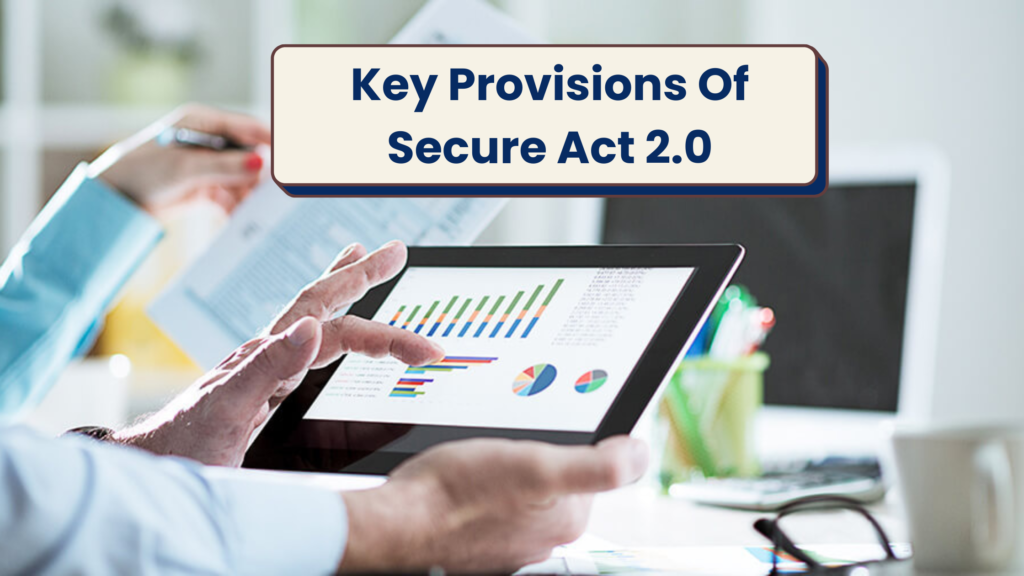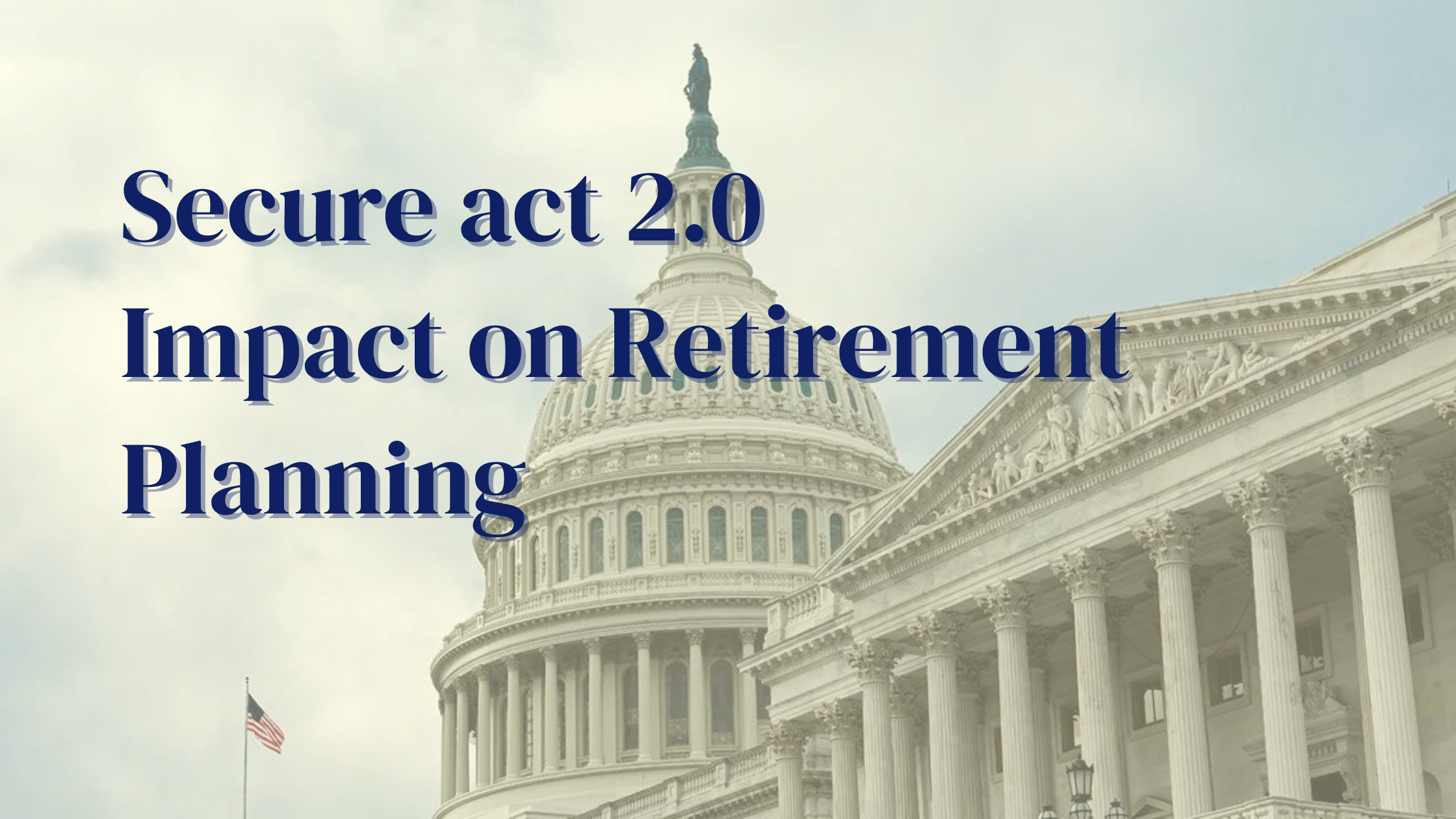The Setting, Every Community Up for Retirement Enhancement (SECURE) Act of 2019 marked a significant shift in retirement planning in the United States. Building on that foundation, the recently enacted SECURE Act 2.0 introduces further modifications to enhance how Americans plan for retirement. As these changes affect various aspects of retirement accounts, from contributions to withdrawals, it’s crucial for individuals, families, and employers to understand what’s new. This blog delves deep into the SECURE Act 2.0, outlining its key provisions, the major changes introduced, and how these could impact your retirement planning strategy.
What is the Secure Act 2.0?
The Setting Every Community Up for Retirement Enhancement (Secure) Act 2.0 developed upon the foundation laid by its predecessor, the Secure Act, which was passed in 2019. It aims to modernize retirement planning by offering new incentives and provisions to help individuals better prepare for their post-work years. The legislation addresses various aspects of retirement savings, including employer-sponsored plans, individual retirement accounts (IRAs), and lifetime income options.
Goals of the New Legislation
The primary goal of SECURE Act 2.0 is to address gaps left by the original act, particularly in how retirement planning aligns with longer life expectancies and varied career paths. It aims to allow more Americans to save efficiently for retirement, regardless of their career stage or income level.
Key Provisions Of Secure Act 2.0

Expansion of Automatic Enrollment
Under the SECURE Act 2.0, new 401(k) and 403(b) plans are mandated to include an automatic enrollment feature. This applies to plans established after December 31, 2024. The initial automatic contribution must be set at a minimum of 3% but not more than 10%, with annual increases of 1% until reaching at least 10% but no more than 15%. This provision aims to boost retirement savings by capitalizing on behavioral finance principles that show higher participation rates when employees are automatically enrolled. Employers may opt out of this requirement if their plan was established before 2025 or if they are a small business with ten or fewer employees.
Increased Catch-Up Contributions
The SECURE Act 2.0 introduces increased catch-up contribution limits for individuals aged 50 and older. From 2025, those aged 60 through 63 will be able to make additional annual contributions of $10,000 to 401(k) and 403(b) plans or $5,000 to SIMPLE IRAs, adjusted annually for inflation. This provides a significant opportunity for individuals nearing retirement to accelerate their savings, especially for those who may have started saving later or experienced financial setbacks.
Matching Contributions for Student Loan Payments
Employers can now contribute to retirement plans on behalf of employees who are paying off student loans instead of contributing to their retirement plans. This means that even if an employee cannot afford to save in their retirement account due to student loans, they can still receive retirement contributions from their employer equivalent to what they would have received if they had made their own contributions.
Impact on Individual Retirement Accounts (IRAs)
Changes to Required Minimum Distributions (RMDs)
The act delays the age at which retirees must start taking RMDs from their retirement accounts. Previously, it was 72, but it has been pushed to 73 starting in 2023, and it will increase to 75 by 2033. This gives investments more time to grow, which can be crucial for retirees who live longer and need more considerable retirement funds.
Penalty-Free Withdrawals
The SECURE Act 2.0 expands the circumstances under which penalty-free withdrawals from retirement accounts are allowed. New exceptions include withdrawals for emergency expenses related to personal or family issues, expenses for birth or adoption, and cases of terminal illness. This provision provides financial relief during critical life events without additional penalties.
After-Tax Contributions in SIMPLE and SEP IRAs
For the first time, the SECURE Act 2.0 allows after-tax contributions to SIMPLE IRAs and increases the limits for after-tax contributions to SEP IRAs. This change provides additional flexibility for taxpayers who want to maximize their retirement savings or plan for tax-free withdrawals in retirement through Roth conversions.
Modifications to Employer-Sponsored Plans
Small Business Incentives
The Act significantly enhances tax credits for small businesses starting new retirement plans, increasing the start-up credit to a maximum of $5,000, up from $500. Additionally, a new credit covers up to $1,000 per employee for contributing to a retirement plan, scaled by the business size and phased out for larger employers. These incentives are designed to lower small businesses’ barriers to offering retirement benefits.
Lifetime Income Options
The new rules require that 401(k) and other similar plans offer a lifetime income option, or annuity, to provide retirees with a steady, guaranteed income stream throughout retirement. This provision aims to reduce the risk of outliving one’s savings by providing income throughout the retiree’s life.
Expanded Access to 401(k) and 403(b) Plans especially for for Part-Time Workers
Part-time workers have historically had limited access to employer-sponsored retirement plans. SECURE Act 2.0 introduces new provisions to make these plans more flexible, such as allowing part-time employees who work either 500 hours per year for three consecutive years or 1,000 hours in one year to participate in 401(k) plans. Additionally, emergency savings accounts linked to 401(k) plans are introduced, allowing employees to withdraw funds for urgent financial needs without penalties.
Final Say!
The SECURE Act 2.0 represents a progressive step towards accommodating the diverse needs of America’s workforce in planning for retirement. By understanding the nuances of the new legislation and adapting strategies accordingly, individuals can significantly enhance their ability to save for a stable and secure retirement. As these changes are complex, consulting with a financial advisor to understand them is highly recommended. This proactive approach will ensure that individuals and families are better positioned to take full advantage of the opportunities presented by SECURE Act 2.0.


